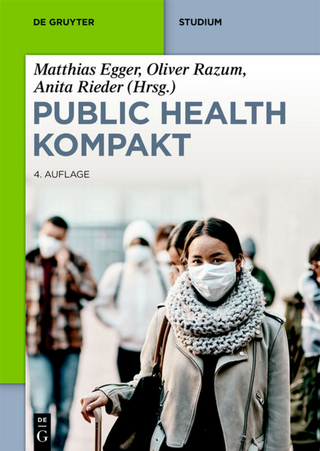
Teaching Epidemiology
Oxford University Press (Verlag)
978-0-19-923948-1 (ISBN)
- Titel ist leider vergriffen;
keine Neuauflage - Artikel merken
Teaching Epidemiology requires skill and knowledge, combined with a clear teaching strategy and good pedagogic skills. The general advice is simple: if you are not an expert on a topic, try to enrich your background knowledge before you start teaching. Teaching Epidemiology third edition helps you to do this, and by providing the world-expert teacher's advice on how best to structure teaching gives a unique insight in to what has worked in their hands. The book will help you plan your own tailored teaching programme. The book is a guide to new teachers in the field at two levels; those teaching basic courses for undergraduates, and those teaching more advanced courses for students at postgraduate level. Each chapter provides key concepts and a list of key references. Subject specific methodology and disease specific issues (from cancer to genetic epidemiology) are dealt with in details. There is also a focused chapter on the principles and practice of computer-assisted learning.
Rodolfo Saracci worked for thirty years (1976-2006) as Chief of Analytical Epidemiology and later as consultant at the WHO International Agency for Research on Cancer, Lyon. He is currently Adjunct Professor, University of Aarhus (Denmark), and has been director since 1988 of the summer didactic programme "European Educational Programme in Epidemiology" (Florence,Italy). He has authored some two hundred publications in Medline, most on cancer as related to environment and nutrition, and on empirical research on ethical issues in medicine & epidemiology. His qualifications/awards include Former President (1996-99) International Epidemiological Association; Founder and Emeritus Member, Italian Association of Epidemiology (AIE, Associazione Italiana Epidemiologia); currently Associate Editor, International Epidemiological Association; and Former Member of editorial boards 'American Journal of Epidemiology' and 'Epidemiology'.
PART 1: CONTEXT ; 1. Introducing the history of epidemiology ; 2. Important concepts in epidemiology ; 3. Study Design ; 4. Statistics in epidemiology ; 5. Teaching a first course in epidemiologic principles and methods ; PART 2: EXPOSURE ORIENTED EPIDEMIOLOGY ; 6. Questionnaires in epidemiology ; 7. Environment ; 8. Occupational epidemiology ; 9. Life course epidemiology ; 10. Pharmacoepidemiology ; 11. Nutritional epidemiology ; 12. Genetic epidemiology ; 13. Teaching molecular epidemiology ; 14. Social inequalities in health ; 15. Climate change and human health: issues for teacher and classroom ; PART 3: OUTCOME ORIENTED EPIDEMIOLOGY ; 16. Infectious disease epidemiology ; 17. Cancer epidemiology ; 18. Teaching a course in psychiatric epidemiology ; 19. Neurologic diseases ; 20. Reproductive epidemiology ; 21. Teaching chronic respiratory disease epidemiology ; 22. Epidemiology of injuries ; 23. Dental epidemiology ; 24. Clinical epidemiology ; 25. Study of clustering and outbreaks ; 26. Field studies in developing countries ; 27. Registries and medical databases ; 28. Teaching epidemiology inside and outside the classroom ; PART 4: PEDAGOGIES ; 29. Computer-assisted learning - principles and practice ; 30. Competency based curriculum in epidemiology ; 31. Guide for teaching assistants in a methods course in a department of epidemiology
| Erscheint lt. Verlag | 15.4.2010 |
|---|---|
| Co-Autor | Rodolfo Sarraci, Dimitrios Trichopoulos |
| Zusatzinfo | 19 black and white line drawings |
| Verlagsort | Oxford |
| Sprache | englisch |
| Themenwelt | Studium ► Querschnittsbereiche ► Epidemiologie / Med. Biometrie |
| ISBN-10 | 0-19-923948-7 / 0199239487 |
| ISBN-13 | 978-0-19-923948-1 / 9780199239481 |
| Zustand | Neuware |
| Haben Sie eine Frage zum Produkt? |
aus dem Bereich


